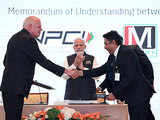INDIAN BANKING INFO











Near-term pressure on their profitability will sustain even as they demonstrate better growth.


IMPORTANT : State Bank of India never asks for your user id/password/pin no. through phone call/SMSes/e-mails. Please do not respond to any such phone call/SMSes/e-mails. Any such phone calls/SMSes/E-mails asking you to reveal your login credentials or One Time Password through SMS could be an attempt to withdraw money from your account. NEVER NEVER share these details to anyone.
State bank of India wants you to be secure.if you come across any such instances please inform us through e-mail to the following address- epg.cms@sbi.co.in
